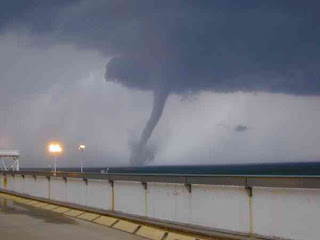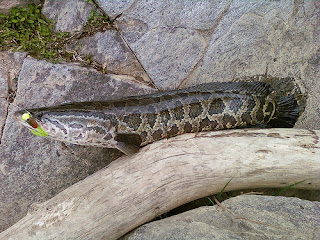Our buddies over at
Chesapeake Bay Action Plan (CBAP) have a new post today about the
potential dangers of using arsenic in chicken feed. First, a little background. I know at least a couple of the writers at CBAP personally. They are good guys, and some of them are good scientists. If you have a question regarding nutrients in Chesapeake Bay, you could do no better than as Walter Boyenton, one of their authors. I would hope I would be on his short list for any questions he might have about arsenic (As) in Chesapeake Bay. John Page Williams, head of Chesapeake Bay Foundation is a good leader for the foundation, and an interesting speaker.
This article, however, is deeply flawed. It's not clear who wrote the article, but it is full of sensationalist crap:
And it [arsenic] is accumulating at alarming rates in the soils of Maryland, where the poultry industry creates over one billion pounds of chicken manure per year, much of which is spread on agricultural fields as fertilizer, and where it ends up leeching into the Chesapeake Bay.
One billion pounds wow! With a B! Of course, what they don't tell you is that the concentration of arsenic in chicken fed roxarsone laced food is in the low parts per million, so that the total amount of arsenic in chicken manure is in the thousand of lbs. A lot of arsenic, if it were piled in one place, but spread over hundreds of thousands of acres of crop land, it wouldn't even make a dent in the second place digit on the As concentrations present naturally in the soil.
According to Food & Water Watch, tests of some wells near Chesapeake Bay farmland displayed levels of arsenic 13 times higher than the EPA’s limits.
This is a wonderful slight of hand. The article linked above, cites nothing as a source:
Groundwater tests on both sides of the Chesapeake Bay’s Coastal Plains found arsenic in some household wells reaching up to 13 times the Environmental Protection Agency’s (EPA) tolerance limit.
First of all, even if you accept, without any evidence that the reported levels exist in groundwater on both sides of the Chesapeake Bay, there is no evidence that it does in fact come from the chicken manure. In fact, no significant amount of As containing chicken feed is used on cropland on the western side of the Bay, and we still have wells with elevated As. And it's located deep, 300 ft or more, below clay layers which would prevent contamination with surface water.
It's natural. And that begs the question of what EPA standard they are referring to. The
current drinking water standard, 10 ppb, or the criteria for aquatic life, s
et at a ridiculously low standard of 0.018 ppb for water and organisms for Human Health for the consumption of water and organism. You would be very lucky to find any rainwater or any surface water with concentrations that low. Which standard are we comparing the numbers that you have no source for?
Before I get too far into this, the argument is not whether arsenic in poultry feed is dangerous or not—that’s a no-brainer. The issue is actually whether or not your legislators have the will to ban a compound which is known to be dangerous to the health of their constituents. The 2011 Maryland legislative session showed that they do not have that will.
Everything is a no-brainer when you have no brains.
To paraphrase Paracelsus, "The Dose Makes the Poison" Let's see if the As concentrations in chickens actually approach any level that might threaten human health. And so then we go to arsenic in the chickens:
Then there's the question of arsenic traces in industrial chicken meat. In 2006, the Institute for Agriculture and Trade Policy (IATP) tested chicken samples from supermarkets and fast-food joints -- and found that 55 percent contained detectable arsenic. Citing the EPA, IATP reckons that 55 percent of arsenic found in poultry meat is inorganic, i.e., toxic.
I can tell you for a fact that arsenic in
any tissue you care to analyze is "detectable", at least if my lab does the analysis. Does this shock you? Environmental chemists strive to measure everything everywhere, and dammit, we're pretty good at it.
According to this paper, the concentration of As in chicken muscle is estimated to be about 0.39 parts per million, 3-4 times higher than other poultry or meat. However, concentrations in seafood, particularly crustaceans (shrimp, crabs, and lobsters)
tend to be much higher. Do you seriously think any of these guys would turn down a good lobster dinner because of the arsenic in it?
Wine is also a good source of As (inorganic as it turns out). Would they insist on an analysis of As and its speciation in the bottle before toasting the demise of eastern shore chicken farmers?
And I don't know how IATP "reckons" it, but the evidence is pretty weak that the "majority" of the As in chicken meat is "inorganic" is based on 99.5% samples being chicken livers. As a major site for metabolism and metal storage, the liver is most unlike muscle tissue,
and other workers find essentially no inorganic As in actual chicken muscle tissue.
So, the "science" they're using here, to get you worried about arsenic groundwater and in chicken meat is just nonsense. Why are they trying to PULL THE WOOL OVER YOUR EYES? Because their true objective is something else. They want the legislature, or the regulatory arms (EPA or MDE) to put the eastern shore chicken farmers out of business. Why? It's not arsenic. It's nutrients. They don't want the nutrients from the chicken manure.
You know what? I AGREE WITH THAT. I would like to see the nutrients from the chicken farms regulated to reduce their impact on the Bay. But to attack them on the basis of the low levels of arsenic added to chicken feed is either deeply ignorant or deeply dishonest. I'll let you pick which.

























